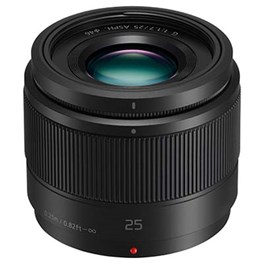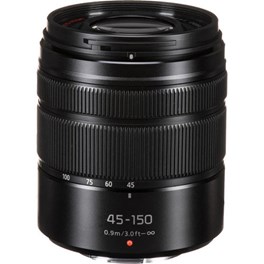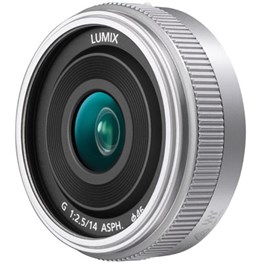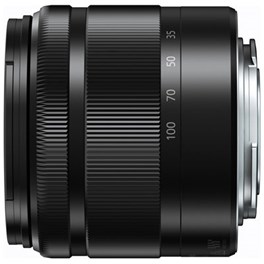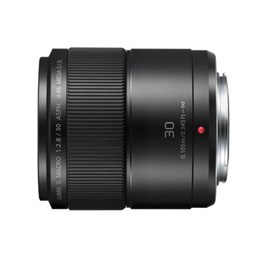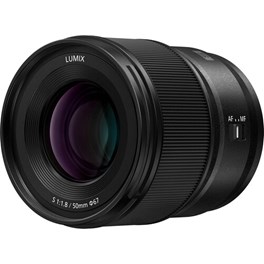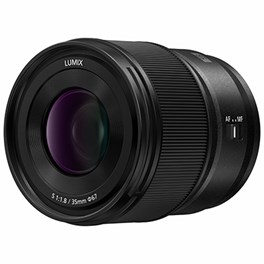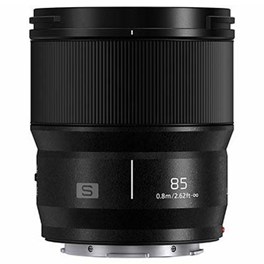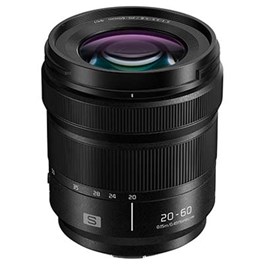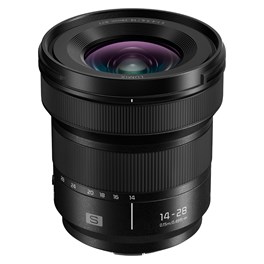
We’re here to help you save some cash on some great kit with our guide to 10 affordable lenses for Panasonic users. Whether you shoot photos, videos or both, Panasonic has a generous stable of well-made lenses at affordable prices.
As a Panasonic user, you might be looking for Micro Four Thirds lenses for a Lumix G camera, or full-frame L-mount lenses for the newer Lumix S series. To avoid playing favourites, we’ve simply included five of each, and divided the guide into sections to make it easy to find the lens you’re looking for. Also, while both mounts have plenty of lens options from multiple different manufacturers, we’ve stuck to Panasonic-made lenses for this guide.
Quick Navigation
Best affordable Panasonic lenses for Micro Four Thirds
Panasonic has been making Micro Four Thirds lenses for a long time, and is very good at it. Playing to the strengths of the system, Panasonic offers a selection of lightweight lenses that take advantage of the MFT crop factor to deliver big telephoto reach in small bodies. Quite a few of Panasonic’s MFT lenses are pancake lenses – so slim and light that they can slip easily into a small pocket.
We’ve arranged these lenses in ascending order of price – and all of them are comfortably less than £300. So, if you’re looking to build a Panasonic Micro Four Thirds lens system on a budget, this is the best place to start.
Panasonic 25mm f1.7 LUMIX G ASPH Black Lens - Micro Four Thirds Fit
The Panasonic 25mm f1.7 LUMIX G ASPH lens delivers a beautiful bokeh background effect for shooting creative portraits. The fast f1.7 aperture encourages handheld shooting without a flash in dimly-lit environments and allows the true atmosphere of a scene to be captured in crisp, clear detail. The lens provides a 50mm focal distance (35mm camera equivalent) similar to that of the human eye when mounted on a Micro Four Thirds camera and takes advantage of Panasonic's 240fps contrast detection AF system. Its 0.25m close focusing distance makes it suitable for a wide range of shooting perspectives.
£149.00 View
Pros:
- Fast f1.7 maximum aperture
- Very good sharpness, with distortion/aberration controlled well
- Can focus in close
Cons:
- No weather sealing
- Not stabilised
Once you remember the 2x crop factor of Micro Four Thirds, it clicks into place what this lens is – a nifty-fifty! That’s right, it’s an affordable and large-aperture 50mm equivalent, though with f1.7 rather than f1.8 as is usual on these sorts of lenses. Granted this isn’t much of a difference, but it certainly doesn't hurt, and is great for throwing out the background to create striking images with a thin depth of field.
For such a cheap lens, we really rate the optical performance of this little prime, and any Micro Four Thirds user should appreciate the crisp, clean images it produces. A combination of an UHR (Ultra High Refractive Index) lens and aspherical lenses help ensure images are sharp from corner to corner. Focusing is nice and quick, and the minimum focusing distance is an impressively short 25cm, so don’t be afraid to get in close.
Panasonic 45-150mm f4.0-5.6 ASPH OIS Black Micro Four Thirds Lens
The compact, metal bodied Panasonic LUMIX 45-150mm f4.0-5.6 ASPH OIS Black Micro Four Thirds Lens is suitable for HD video recording and is perfect for capturing crisp, blur-free images when shooting sporting events and other distant subjects. Panasonic's MEGA O.I.S. optical image stabiliser enables you to capture photos in low-lit situations by suppressing the blur caused by handshake. Featured in the lens is Nano Surface Coating technology to minimise reflection to ensure a clear picture is achieved with little ghosting and flare. The lens provides the out of focus areas with an attractive blur thanks to its rounded seven blade diaphragm.
£179.00 View
Pros:
- Very affordable for a telezoom
- Incorporates optical stabilisation
- Excellent control of distortion
Cons:
- Sharpness drops at tele end
- No weather sealing
This lens works out to a 90-300mm telezoom in full-frame terms, and at this price, it’s one of the most affordable such zooms for any system. The fact that you also get a built-in optical stabilisation system – and one that’s highly effective, too – only sweetens the deal, and frankly any user of Panasonic MFT cameras should think about picking up this lens. It only weighs 200g, making it a lightweight addition to any kit bag and a wonderfully inexpensive way to give yourself telephoto reach whenever you need it.
Is it as sharp as high-end telephoto zoom lenses for professionals? Of course not – it’s less than a tenth of the price. But the Panasonic 45-150mm f4.0-5.6 ASPH OIS does deliver pretty consistently excellent sharpness in the centre of images, with distortion well controlled-for. And it’s only when you push the zoom to its outer limits that you might notice a little softness.
Panasonic 14mm F2.5 LUMIX G II ASPH Lens - Silver
The Panasonic 14mm with bright f2.5 aperture is a high-performance, wide-angle prime lens with Micro Four Thirds fit for both photo and video use. At just 20.5mm thick, this slim and lightweight lens is great for landscapes, indoor shooting, travel and night time photography.
£229.00 View
Pros:
- Ultra-slim pancake lens
- Focusing is fast and virtually silent
- Useful all-purpose 28mm equivalent
Cons:
- f2.5 not as fast as other primes
- No stabilisation or weather sealing
This pancake lens is slim and light enough to slip into a shirt pocket. Somehow, it weighs just 55g – that’s about the same as a couple of AA batteries! The Panasonic 14mm F2.5 LUMIX G II ASPH delivers an equivalent focal length of 28mm, which is a useful perspective for street photography in particular – wide, but not too wide, allowing you to fit plenty in the frame without distorting the scene too much.
The focusing action on this lens is fast, and also pleasingly near silent, which makes it a good choice for vlogging (another application well-suited to that handy 28mm focal length). The maximum aperture is f2.5, which is reasonably fast, though not quite as fast as the 28mm primes you’d see for other systems. There’s also no stabilisation built in, so you may have difficulty shooting handheld once the light gets low.
Panasonic 35-100mm f4-5.6 LUMIX G VARIO ASPH OIS Lens - Black
The Panasonic 35-100mm f4-5.6 LUMIX G OIS lens with Micro Four Thirds fit delivers a versatile focal range (70-200mm on a 35mm camera) in a compact, easily portable design. The lens features Optical Image Stabilisation, an elegant metal finish and is ideal for portraiture, travel and capturing subjects at a distance.
£265.00 View
Pros:
- Useful 70-200mm equivalent focal range
- Metal finish on body
- Optical stabilisation
Cons:
- Maximum aperture drops at tele end
- Not weather-sealed
There’s a good reason that so many photojournalists favour a 70-200mm focal length – it’s a useful workhorse range that gives you reach when you need it. The Panasonic 35-100mm f4-5.6 LUMIX G VARIO ASPH OIS is much lighter than most 70-200mm lenses (as is the advantage of Micro Four Thirds) and its metal-finished barrel gives it a premium feel.
We also like the fact that this 70-200mm equivalent lens is optical stabilised, as this helps with control at the telephoto end. It also helps extend shutter speeds at narrower apertures – useful in low light, especially if you’re working at the tele end of the lens and have a maximum of f5.6 to work with. Bear in mind also that this lens isn’t weather-sealed, so you’ll need to be careful when working outdoors.
Panasonic 30mm f2.8 Macro LUMIX G ASPH MEGA OIS Lens
The Panasonic 30mm f2.8 Macro LUMIX G ASPH MEGA OIS lens with Micro Four Thirds fit is ideal for taking close-ups and life-size macro shots. Elegantly designed with a metallic black finish and strong metal mount, the lens perfectly matches the style of the LUMIX G interchangeable lens cameras and is ideal for day-to-day use. The Panasonic 30mm lens with 0.105m minimum focusing distance features a bright f2.8 aperture, MEGA O.I.S. (Optical Images Stabilisation), fast Auto Focus (AF) and a 1x life-size magnification to deliver stand-out close-ups with edge-to-edge sharpness. This lens is suitable for close-ups of flowers, food and insects and it's also ideal for portraiture, lowlight work and travel photography.
£279.00 View
Pros:
- Impressive close-up capability
- Hard-wearing metal mount
- Optical stabilisation
Cons:
- Not weather-sealed
While we tend to think of macro photography as being something done on a fixed tripod with a big, heavy set of optics, this macro from Panasonic has a lot going for it as a hand-held close-up lens. For a start, its light weight and short telephoto focal length (60mm equivalent) make it easy to wield, while the optical stabilisation that’s built in means you’ll have an easier time getting sharp shots without a tripod. The autofocus is reliably snappy, and the minimum focusing distance is an impressive short 10.5cm, meaning you can get really close to your subjects.
We also like the fact that the mount on this lens is metal – it tends to be plastic on cheaper lenses, and metal is a lot more durable. Producing stunning,. Crisp images at 1x life-size magnification, this lens delivers a true macro experience at an absolute steal of a price. Recommended for any Panasonic user with an interest in close-up photography.
Best affordable Panasonic lenses for L-mount
The L-mount came about as an alliance between Leica, Sigma and Panasonic. With the former two manufacturers admirably taking care of most of the high-end lenses, Panasonic has done an admirable job of offering affordable full-frame lenses for the system. The trio of f1.8 prime lenses – all of which feature on our list – is a particularly welcome addition, making it much more practical to kit out an L-mount camera on a budget.
These lenses aren’t as affordable as the Micro Four Thirds options, but they’re still reasonably priced as far as full-frame glass goes. We’ve picked a selection of primes and zooms for L-mount, all of which are produced by Panasonic.
Panasonic LUMIX S 50mm f1.8 Lens (White Box)
Next up, Panasonic’s 50mm f1.8 S Lens. This impressively compact and lightweight lens weighs just 300g and its advanced optical structure makes this a truly versatile lens for all-day use. Exceptional image quality is ensured with a wide, bright and fast maximum aperture of f1.8 that offers enhanced low-light performance. Please note: This lens is packaged in a white un-branded box.
£399.00 View
Pros:
- Lightweight at 300g
- Brilliant image quality with well-controlled distortion
- Weather resistant
Cons:
- No stabilisation
The resident nifty-fifty for L-mount, the Panasonic LUMIX S 50mm f1.8 is a brilliantly affordable option for any user of a Lumix S camera. Significantly cheaper than its f1.4 stablemate, the 50mm f1.8 nevertheless delivers superb image quality with brilliant bokeh. It’s a fun lens to shoot with wide open, and lends itself well to being used to roam the streets looking for quick moments and fun shooting opportunities. It’s as comfortable with video as it is for stills, meaning you can make the most of hybrid cameras like the Lumix S5 II.
It’s impressive that a lens as fully featured as this manages to weigh just 300g – and that’s with a weather-resistant build. The only thing to note is that this lens doesn’t have its own optical stabilisation, so you’ll need to rely on in-camera systems.
Panasonic LUMIX S 35mm f1.8 Lens
Just launched
One of four large-aperture, fixed focal length Panasonic lenses, the LUMIX S 35mm f1.8 offers exceptional image quality and performance. Packed inside this compact lens is an array of premium elements and an intelligent design resulting in professional-level image/video capture. With its rugged dust/splash-resistant build, this lens offers flexibility as well as its image-taking capabilities.
£579.00 View
Pros:
- Weather-resistant design
- Lightweight build
- Fast, smooth and silent autofocus
Cons:
- No stabilisation
Of a piece with the 50mm f1.8 above, the Panasonic LUMIX S 35mm f1.8 is a great choice of reportage or storytelling lens. Its naturalistic but wide focal length is favoured by many documentary shooters who like to get plenty in the frame without distorting subjects, and the f/1.8 maximum aperture allows you to get plenty of light when you require it. The shallow depth of field on this lens looks great too, with gorgeous bokeh.
Once again, this lens lacks stabilisation, but other than that, there really isn’t much to nitpick here. The autofocus is reliably small and silent enough for video work, and props are due to Panasonic for adding weather resistance to such a lightweight lens (it weighs in at just 259g). The close focus distance of 24cm also goes to make it that much more versatile – don’t be afraid to get in close.
Panasonic LUMIX S 85mm f1.8 Lens
Coming as Panasonic's first 85mm lens for their esteemed L-Mount camera bodies, this LUMIX lens has a premium quality build and feel. It's equipped with a wide and bright constant f1.8 aperture that is going to provide you with enhanced depth of field control and the ability to capture beautifully smooth and circular bokeh. The lens construction is comprised of 9 glass elements in 8 groups, which includes two ED (Extra Dispersion) lenses. These elements help to suppress the appearance of both axial chromatic and chromatic aberrations. In addition to this, the lens is designed so that you'll see significantly reduced focus breathing which makes this lens ideal for both video and stills work. Finally, this ideal portraiture lens has a rugged and dust/splash-resistant design meaning that you can keep shooting even when the weather takes a turn.
£599.00 View
Pros:
- Affordable portrait lens
- Excellent sharpness and overall image quality
- Lovely bokeh
Cons:
- Not stabilised
This prime completes the trinity of affordable f1.8 lenses for L-mount, so it’s got many of the same pros and cons as its previous two stablemates. You get a weather-resistant body, but no stabilisation, which is a fair trade in our book, especially when the lens quality is as lovely as this. The 85mm focal length is the classic short telephoto beloved by portrait shooters, and produces beautifully flattering images of human subjects – aided by the lovely bokeh in defocused areas of the image.
The construction of the LUMIX S 85mm f1.8 consists of 9 glass elements in 8 groups, including two ED (Extra Dispersion) lenses. This produces pin-sharp images, with highly effective suppression of axial and chromatic aberration. The lens focuses quietly, and is excellent for video if you don’t mind working with a narrower perspective than is typical.
Panasonic LUMIX S 20-60mm f3.5-5.6 Lens
The LUMIX S 20-60mm F3.5-5.6 is a compact, lightweight standard zoom lens that covers ultra-wide 20mm to standard 60mm focal length for both videography and photographic excellence. The wide viewing angle makes it easier to shoot indoors where room space is limited, while a stunning close-up capability of 0.15m (maximum magnification 0.43x) supports table-top photography. The LUMIX S 20-60mm F3.5-5.6 also ensures smooth, high-quality video recording thanks to a mechanism that suppresses focus breathing.
£549.00 View
Pros:
- Useful standard focal range for photo and video
- Weather resistant
- Superb image quality with excellent control of distortion/aberrations
Cons:
- No stabilisation
- Aperture narrows considerably at narrow end
Weighing just 350g, the Panasonic LUMIX S 20-60mm f3.5-5.6 is a well-balanced lens that covers a short but useful focal range. Going from a wide perspective of 20mm to a narrow near-telephoto 60mm, it’s great for producing imagery with a naturalistic perspective, and has found favour with photo and video shooters alike. Focus breathing has been suppressed to ensure smooth, natural-looking footage, and the close-focusing distance of 15cm is handy. Optically, Panasonic has done a superb job of engineering this lens, with virtually no distortion or chromatic aberration to speak of, and extremely low vignetting.
Once again, there’s no optical stabilisation to speak of, and the sharp drop to f5.6 once you zoom in may make the lens more challenging to use in low light. Otherwise, this is a versatile and dependable lens for use with Lumix S cameras, whether you shoot stills, videos, or both.
Panasonic LUMIX S 14-28mm f4-5.6 Macro Lens
Panasonic’s Lumix 14-28mm f4-5.6 Macro Lens is a new ultra wide-angle zoom lens with macro capabilities. Designed for L-Mount systems cameras, the versatile zoom range is useful for any project, from epic landscape photography to expressive portraiture and detailed macro shots. The lens construction offers stunning clarity and gorgeous bokeh, and the rugged, compact build adapts to any situation.
£699.00 View
Pros:
- Ultra-wide perspective
- Minimum focus distance 15cm throughout zoom range
- Weather-resistant
Cons:
- Not “true” macro (magnification 0.5x not 1.0x)
- Somewhat narrow variable aperture
While this lens isn’t technically a “true” macro lens, it still dependably produces terrific close-detail images, and is a terrifically affordable option for anyone who wants to shoot close-up images with a Lumix S camera. The zoom range also expands to an ultra-wide 14mm perspective, which is great for landscapes and architecture, especially at this price. The weather-resistant build of the lens makes it ideally suited to outdoor adventures, and while there’s again no stabilisation, at such a wide perspective, it’s less of an issue.
With high-precision autofocus, the Panasonic LUMIX S 14-28mm f4-5.6 Macro is a dependable lens for a host of different applications. If you want to focus manually, the sensitivity of the focusing ring is highly customisable, meaning you can get it working just the way you prefer. The light weight of the lens, and the fact that it doesn't change length when zooming, also mean it balances well on a stabilising gimbal.

FAQs
What are Panasonic lenses known for?
Panasonic lenses are renowned for their high-quality optics, superb image stabilisation, and compatibility with Panasonic Lumix mirrorless cameras. They are characterised by their sharpness, clarity, and versatility in various photography and videography applications.
What is the difference between Panasonic Leica and Panasonic Lumix lenses?
Panasonic Leica lenses are developed in collaboration with Leica, known for their exceptional optical quality. They offer premium image quality and craftsmanship. Panasonic Lumix lenses are designed by Panasonic and also offer excellent performance, but they are typically more budget-friendly.
Do Panasonic lenses have image stabilisation?
Many Panasonic lenses feature optical image stabilisation (OIS) or in-body image stabilisation (IBIS), which helps reduce camera shake and allows for sharper images and smoother videos. However, not all Panasonic lenses have this feature, so it's essential to check the lens specifications.
Which Panasonic lenses are best for portrait photography?
For portrait photography, Panasonic offers several Micro Four Thirds (MFT) lenses around the 40mm mark which translates to around 80mm equivalent range in full-frame terms. This is an excellent focal range for portraiture, allowing for beautiful subject-background separation and often stunning bokeh.
Can I use Panasonic lenses for video recording?
Yes, Panasonic lenses are suitable for video recording. Many models offer smooth and quiet autofocus, making them ideal for video work. Lenses with wide apertures are also favoured for achieving cinematic depth of field.
How do we decide?
Our in-house photography experts, store staff and partners all work collaboratively to pour over these guides. The cameras and equipment recommended in our guides are based on their personal opinion, empirical experience and of course, feedback from our customers. We way up price, features, quality and the all-important 'je ne sais quoi' to make sure we recommend products that will delight and inspire.
If you would like more advice on any purchase our contact centre staff are here to help. Alternatively, you can reach us via email or social media. And don't forget. If you were to purchase anything based on our recommendations you'll be covered by our full returns policy
Buying Guides
